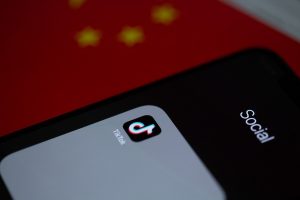Combining elements of technology, business, pop culture, national security, international competition, and President Donald Trump’s direct involvement, the new TikTok deal can be challenging to understand. Below, a quick summary of the deal, based mainly on the Wall Street Journal’s excellent report.
TikTok is an app that has filled a worldwide niche left open by social media giants like Facebook and Twitter. It allows every user to create appealing content, have it shared widely across the globe with the most receptive viewers, and most of all to receive tailored — in fact highly addictive — content in return. Inveterate Facebook users might liken that social network’s performance to an old Ford truck; TikTok works like a SpaceX rocket. Even the micro-blur on its badge sets it apart from every other app. Appealing first to young adults, increased internet usage in 2020 has expanded the app’s saturation significantly.
Such a meteoric rise does not go without notice. For Beijing, the app and its parent company ByteDance have become a de facto “national champion,” capturing prized ground in a mature social media market while rising as a symbol of national pride. But its connections to Beijing have aroused suspicion among China’s global competitors. China is a constant violator of privacy and intellectual property rights, among a vast and growing array of severe human rights abuses. Despite ByteDance’s (possibly sincere) protestations, China’s record suggests it has full access to TikTok’s information.
India first banned TikTok outright in late June amid border tensions with China. The United States, citing security concerns, threatened to follow suit shortly thereafter. Enter Trump, whom I suspect sees in TikTok the opportunity to capture a highly desirable property. To be sure Trump is willing to see the app banned, but taking it would mean a boon for the United States and (to his reckoning) a triumph for himself in an election year. Using the threatened ban as a lever, Trump appears to have made himself the driving force behind this deal. Lack of involvement by the usual investment banks further suggests a hasty action.
To seal the deal, however, the president must produce an agreement satisfactory to the companies and governments involved, including his own government. The initial pairing of ByteDance and Microsoft fell through as Trump’s demands for control of both TikTok and its coveted algorithm spurred rejection from Beijing. America’s powerful Committee on Foreign Investment in the United States (CFIUS) has voiced strong concerns as well.
By September, Oracle and Walmart had taken up the American side of the deal. In this configuration, Trump dropped his demand for the algorithm in return for minimally more secure conditions. However, it remains unclear whether even this reduced arrangement will pass muster in Beijing or indeed with CFIUS. Trump’s key officials have recently stated that the deal still inadequately addresses the threat posed by TikTok. It would appear that allowing the algorithm to remain with the parent company would at the very least leave open a “back door” route for China’s government to funnel data. And the app’s prevalence on cell phones hints at the enormous scale and diversity of data Beijing might collect.
This brings us to today. Trump’s continued rumblings about a ban seem to have bought him a $5 billion promise from the U.S. entrants for a vaguely described “education program,” although the Chinese side appears unaware of this. Trump had previously requested “key money” — a large payment to the U.S. government from the companies — in exchange for brokering the deal, but White House counsel had insisted this was illegal. Besides that, it remains for the president to convince the parties involved.






























